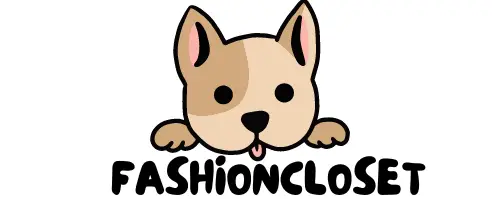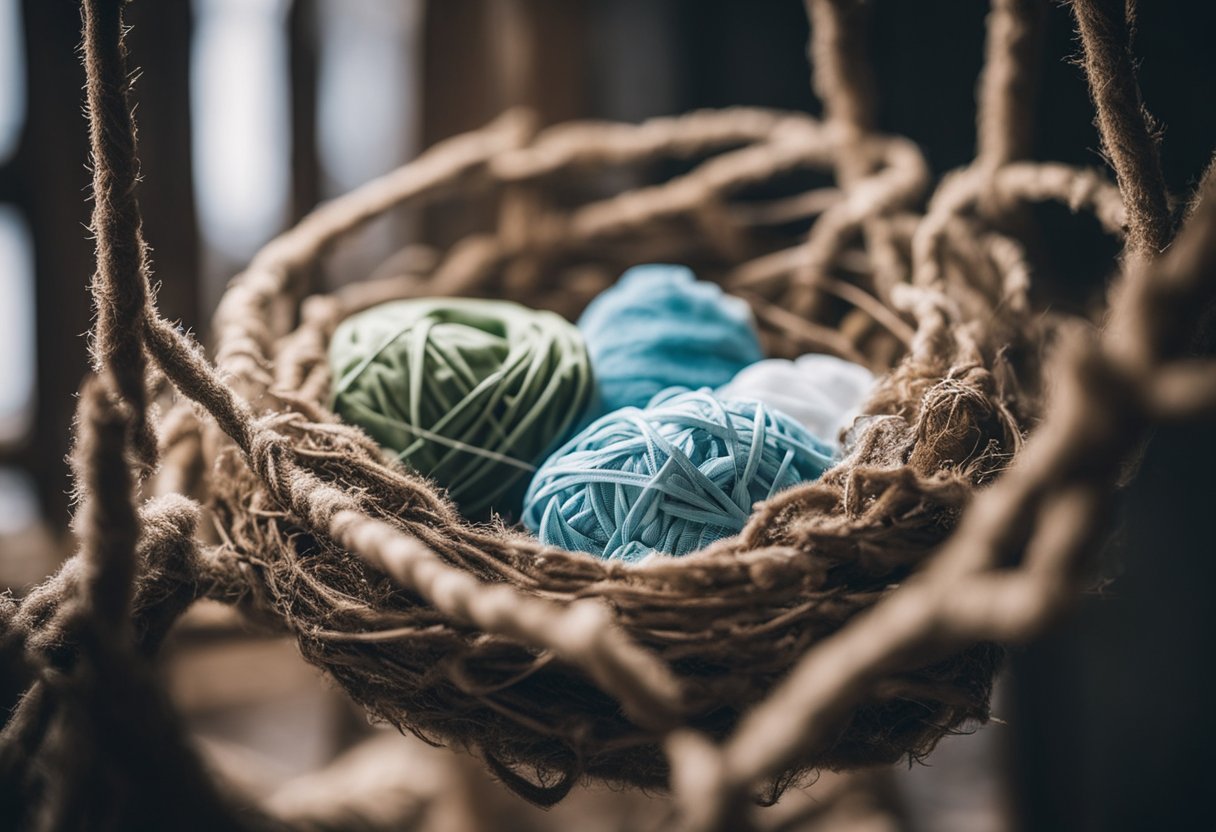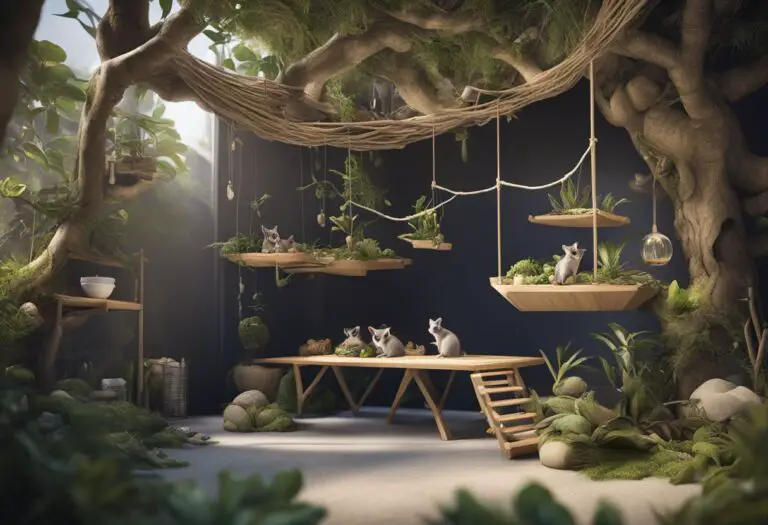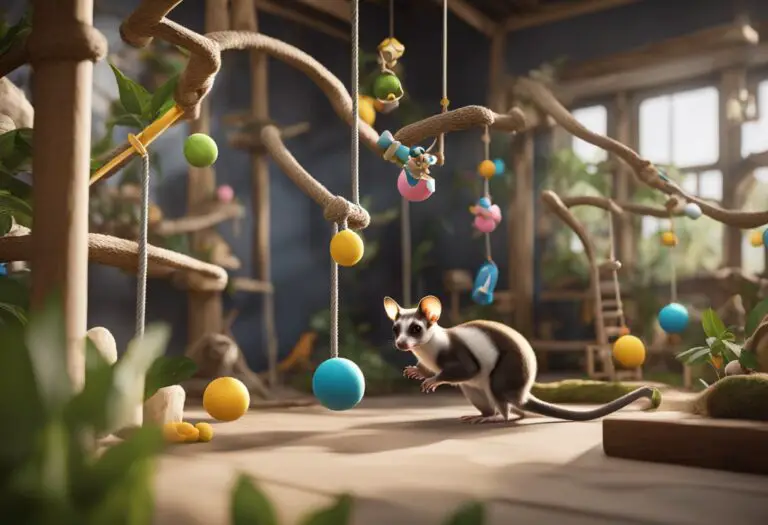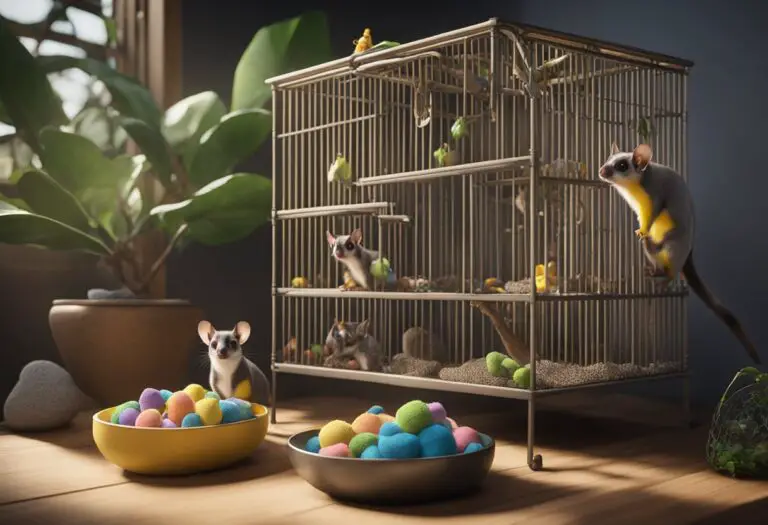Safe Bedding for Sugar Gliders
Did you know that sugar gliders produce an astonishing 4 cups of urine per day? This surprising statistic highlights the importance of providing safe and absorbent bedding for these delightful marsupials. Ensuring a comfortable and healthy living environment is crucial for the well-being of sugar gliders, and the bedding material used in their enclosure plays a vital role in achieving this goal.
This article will explore the different safe bedding options for sugar gliders, from natural fiber choices to paper-based products, helping you create a cozy and dust-free nest for your furry friend. By understanding the unique nesting habits and bedding requirements of sugar gliders, you can ensure they rest and thrive in a safe and comfortable environment.
Understanding Sugar Glider Bedding Needs
Providing a safe and comfortable living environment for sugar gliders is crucial for their overall health and well-being. One of the key aspects of this is the bedding material used in their enclosure. Sugar gliders have unique bedding requirements that must be considered to ensure their contentment and natural behaviors are supported.
Importance of Safe and Comfortable Bedding
Safe and comfortable bedding is essential for sugar gliders, as it creates a cozy nesting environment and promotes their natural behaviors. Selecting the right bedding material is crucial for maintaining their physical and emotional well-being, as it can directly impact factors such as respiratory health, odor control, and the ability to burrow and nest.
Sugar Glider Nesting Habits
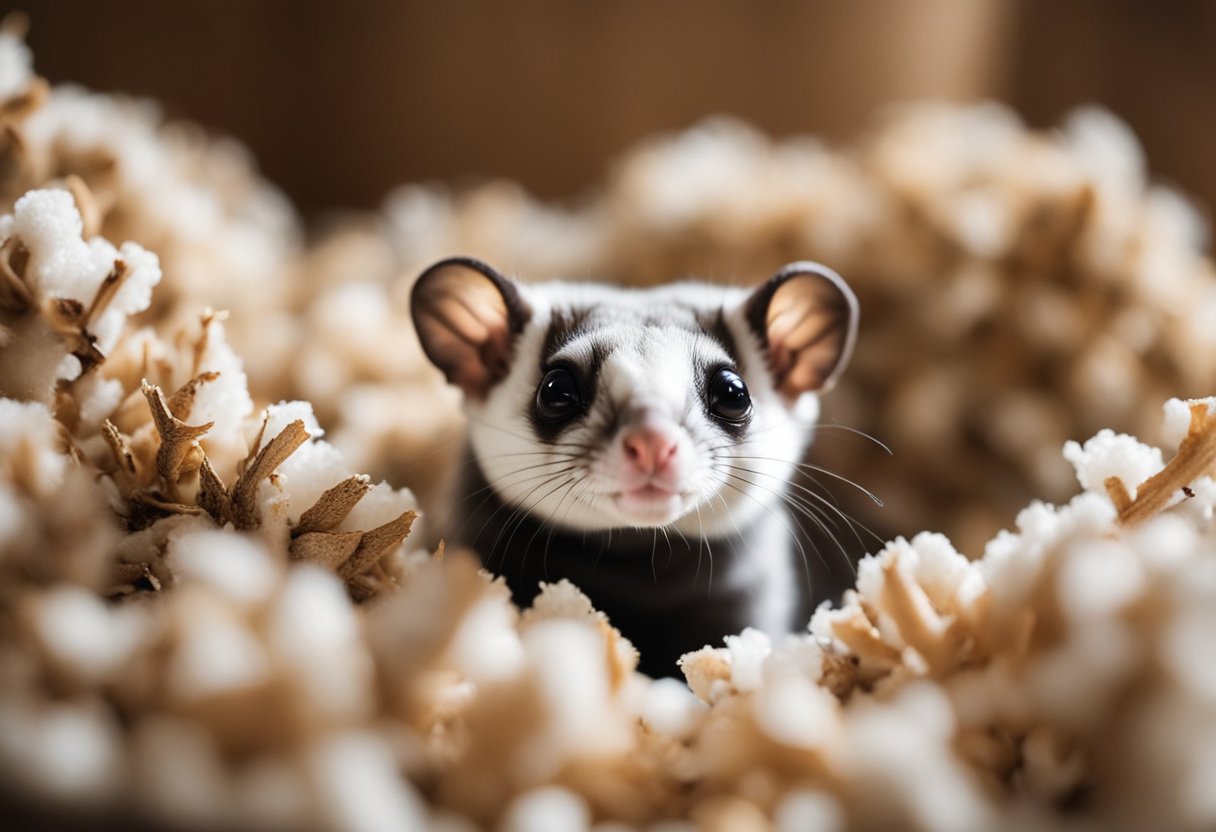
Understanding sugar glider nesting habits is vital when choosing the appropriate bedding. Sugar gliders have a natural tendency to burrow and create cozy sleeping areas. They prefer soft, absorbent materials that allow them to nest and burrow comfortably. Providing bedding that aligns with their nesting preferences can help reduce stress and encourage natural behaviors.
| Bedding Material | Benefits for Sugar Gliders |
|---|---|
| Natural Fiber Options (e.g., aspen shavings, timothy hay) | Soft, absorbent, and suitable for burrowing and nesting |
| Paper-Based Products (e.g., shredded newspaper, unscented paper) | Absorbent, dust-free, and provide a comfortable substrate |
| Washable Bedding | Allows for easy maintenance and hygiene control |
Non-Toxic Bedding Materials
When selecting bedding for your sugar gliders, it’s crucial to prioritize non-toxic materials that are safe for their health. Natural fiber options, such as aspen shavings, timothy hay, and recycled paper, are commonly used and provide a safe, absorbent, and comfortable substrate for sugar glider nests. These natural fiber bedding materials offer a natural and dust-free alternative that aligns with the sugar glider’s nesting preferences.
Natural Fiber Options
Aspen shavings are a popular choice for sugar glider bedding due to their low dust content and soft, comfortable texture. Timothy hay, a coarse and absorbent natural grass, can also make an excellent addition to the sugar glider’s nesting area, providing a natural source of enrichment and a comfortable resting spot. Recycled paper products, such as shredded newspaper or unscented, soft paper, can be a suitable and eco-friendly option for sugar glider enclosures, offering a dust-free and absorbent bedding material.
Paper-Based Products
In addition to natural fiber options, paper-based bedding products can be a great choice for sugar glider enclosures. Shredded newspaper or unscented, soft paper provide a safe, absorbent, and dust-free substrate that can meet the sugar glider’s nesting needs. These paper-based bedding materials are often easy to clean and maintain, making them a convenient option for sugar glider owners.
When choosing non-toxic bedding materials for your sugar gliders, it’s essential to consider factors such as absorbency, softness, and dust-free properties to ensure your furry friends can nest in a safe and comfortable environment.
Absorbent Bedding for Odor Control
Sugar gliders produce a significant amount of urine and feces, which can lead to unpleasant odor buildup in their enclosure if not properly managed. Selecting highly absorbent bedding materials is crucial for maintaining a clean and odor-free environment for these delightful pets. Natural fiber options, such as aspen shavings or timothy hay, and paper-based bedding products are generally more absorbent than other bedding types, helping to effectively control odors and keep the sugar glider’s habitat fresh and inviting.
The increased absorbency of natural fiber and paper-based sugar glider bedding materials helps to quickly and efficiently soak up moisture, preventing the buildup of unpleasant smells. This, in turn, contributes to a healthier and more comfortable living space for your furry companions. By choosing absorbent sugar glider bedding, you can ensure that your sugar gliders’ enclosure remains clean, dry, and free from offensive odors, creating a safe and welcoming environment for them to thrive.
| Bedding Material | Absorbency Level | Odor Control Effectiveness |
|---|---|---|
| Aspen Shavings | High | Excellent |
| Timothy Hay | Moderate to High | Good |
| Recycled Paper | High | Excellent |
| Shredded Newspaper | Moderate | Good |
Soft and Cozy Bedding for Nests
Sugar gliders have a natural instinct to nest and create cozy sleeping areas. Providing soft and comfortable bedding materials is essential for their well-being. When selecting bedding, consider the texture and softness to ensure it aligns with the sugar glider’s nesting preferences.
Choosing the Right Texture
Sugar gliders prefer a soft, plush bedding material that mimics the feel of natural nests. Natural fiber options, such as aspen shavings or timothy hay, offer a comfortable and inviting texture for sugar glider nests. Paper-based bedding products, like shredded newspaper or unscented, soft paper, can also provide a cozy and safe substrate for your furry friends.
Providing Nesting Materials
In addition to the bedding itself, offering nesting materials can further enhance the coziness of the sugar glider’s sleeping quarters. Consider providing shredded paper, soft fabrics, or natural fibers that they can use to build and customize their nests. These additional materials allow sugar gliders to express their natural nesting behaviors and create a truly comfortable living environment.
Dust-Free Bedding for Respiratory Health
Sugar gliders have sensitive respiratory systems, and exposure to harmful dust particles can lead to respiratory issues. Selecting dust-free bedding materials is crucial to maintaining their respiratory health. Natural fiber bedding options and paper-based products tend to be less dusty, making them a safer choice for sugar gliders. Avoid using bedding with high dust content, as it can contribute to respiratory problems.
Avoiding Harmful Dust Particles
When choosing bedding for your sugar glider, it’s essential to consider the dust content. Bedding materials like wood shavings or certain types of litter can generate significant amounts of dust, which can irritate and potentially harm your pet’s delicate respiratory system. By opting for dust-free options, such as natural fiber bedding or paper-based products, you can help maintain a clean and healthy environment for your sugar glider, reducing the risk of respiratory issues.
Safe Bedding for Sugar Gliders
When choosing bedding for sugar gliders, safety should be the top priority. Avoid using materials that could be toxic, sharp, or pose a risk to your furry friend’s health. Natural fiber options and paper-based products are generally considered safe and suitable for sugar glider enclosures. It’s important to research thoroughly and consult with veterinarians or experienced sugar glider owners to ensure you select the safest bedding for your pet.
When it comes to sugar glider bedding materials, non-toxic options that are absorbent and dust-free are ideal. Soft bedding for sugar glider nests can provide a cozy and comfortable environment, while natural fiber bedding options and paper-based bedding products are often a safe and washable choice. Proper sugar glider cage lining is also crucial for maintaining a healthy and clean living space.
Washable Bedding Options
Maintaining a clean and hygienic environment for your sugar glider is essential for their health and well-being. Choosing washable bedding options can simplify the cleaning process and reduce the need for frequent bedding replacements. Natural fiber and paper-based bedding materials are often machine-washable, allowing you to easily clean and refresh the bedding as needed.
Maintaining Cleanliness
Regularly washing your sugar glider’s bedding is crucial for maintaining a sanitary living space. Absorbent bedding materials like natural fibers and paper-based products can be easily laundered, helping to keep your pet’s habitat clean and odor-free. By washing the bedding on a routine basis, you can ensure a comfortable and healthy environment for your sugar glider.
Reusable Bedding Products
In addition to the convenience of machine-washable bedding, reusable bedding products can also be a cost-effective and environmentally-friendly choice. Natural fiber options and paper-based materials can be washed and reused multiple times, reducing the need for frequent bedding replacements. This not only saves you money but also helps to minimize waste and promote sustainability in your sugar glider’s care.
Sugar Glider Cage Lining Considerations
In addition to the bedding material, the lining of the sugar glider’s cage is an important factor to consider. The cage liner should be made of a durable and easy-to-clean material that is safe for your sugar glider. Natural fiber or paper-based options can be suitable choices, as they provide a comfortable and absorbent surface.
Choosing the Right Liner
When selecting a cage liner, ensure that it is non-toxic, resistant to chewing, and easy to maintain for a clean and healthy living environment. Look for liners that are specifically designed for small animal enclosures, as they are often more suitable for sugar gliders’ unique needs. Avoid using materials that could be potentially harmful or pose a risk of ingestion for your furry friend.
The ideal cage liner should be absorbent to help control odors and maintain a clean habitat. Natural fiber options, such as recycled paper or unscented cardboard, can be excellent choices as they are safe, absorbent, and easy to clean. Paper-based liners are also often more durable and resistant to chewing compared to other materials.
